Original | Odaily Planet Daily
Author | Lucaskog
Editor | Qin Xiaofeng
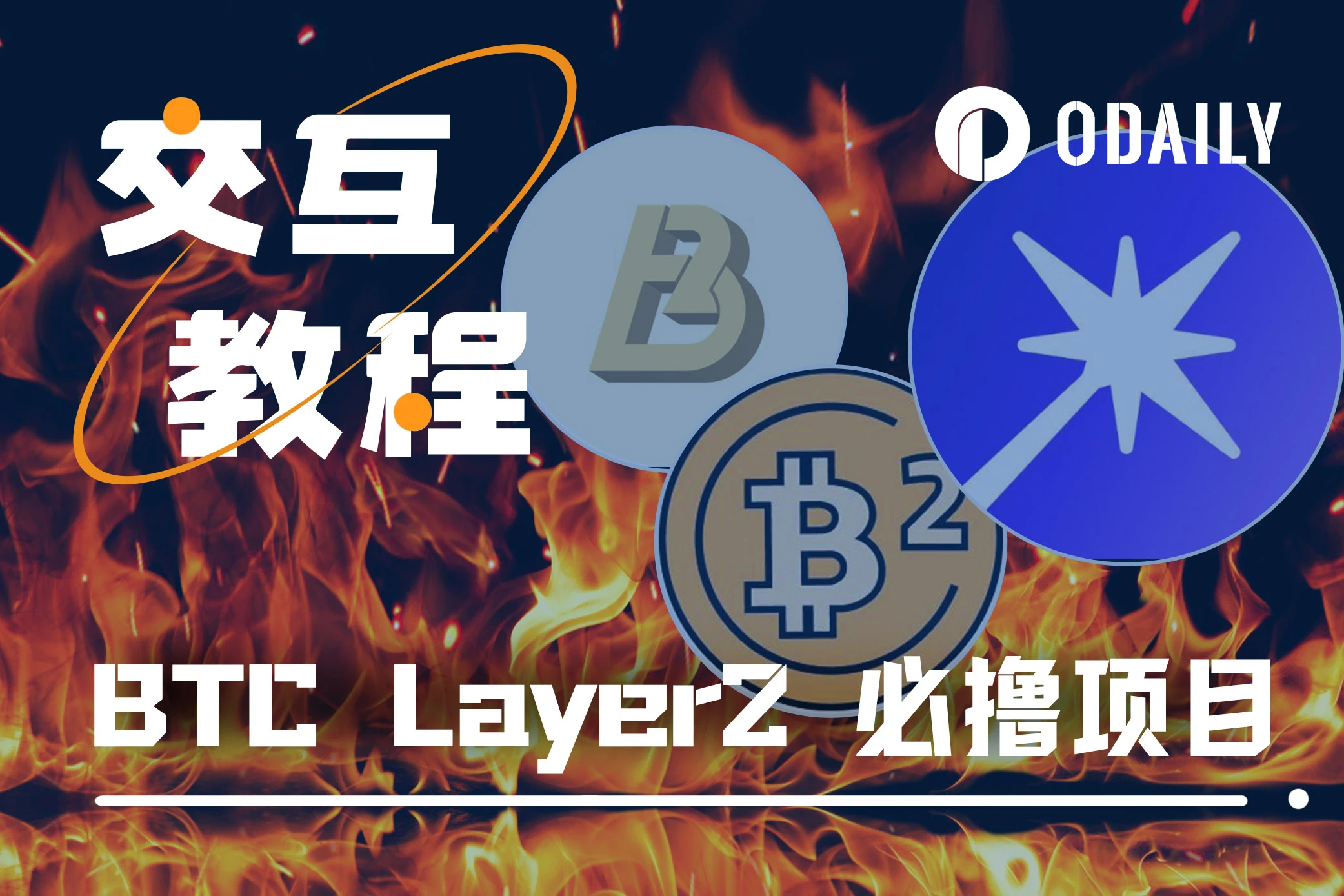
As the number of Bitcoin users continues to grow, network congestion, transaction delays, and soaring transaction fees have become prominent issues. Especially in the second half of last year, the Bitcoin chain saw a surge in gas fees, reaching over 600 at one point.
In order to address the scalability issues of Bitcoin, the second layer network (Layer2) has emerged, but it is still in its early stages. Odaily Planet Daily has listed three expected BTC Layer2 projects: B² Network, Merlin Chain, and BEVM, and will guide everyone through the interaction process.
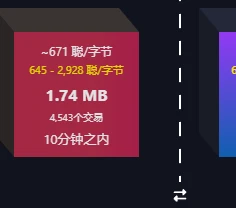
Preparation for Participation
Bitcoin test coin acquisition: Enter Unisat or OKX wallet, switch the network to the testnet, open the faucet link to enter the testnet wallet address to obtain test tokens: coinfaucet (generous rewards, claim every 12 hours), bitcoinfaucet (multiple claims allowed, but in small quantities), beyondfaucet (less stable).
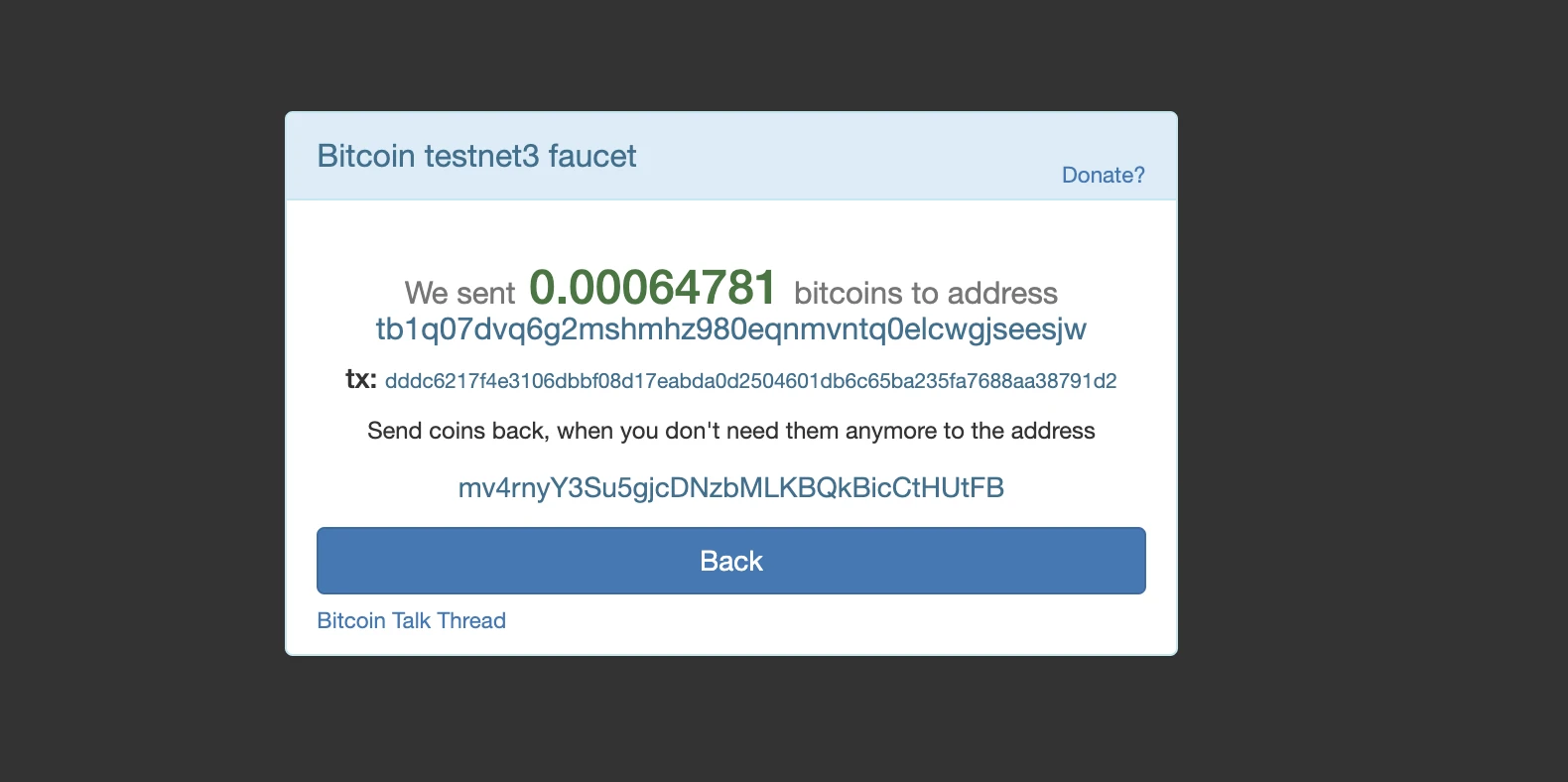
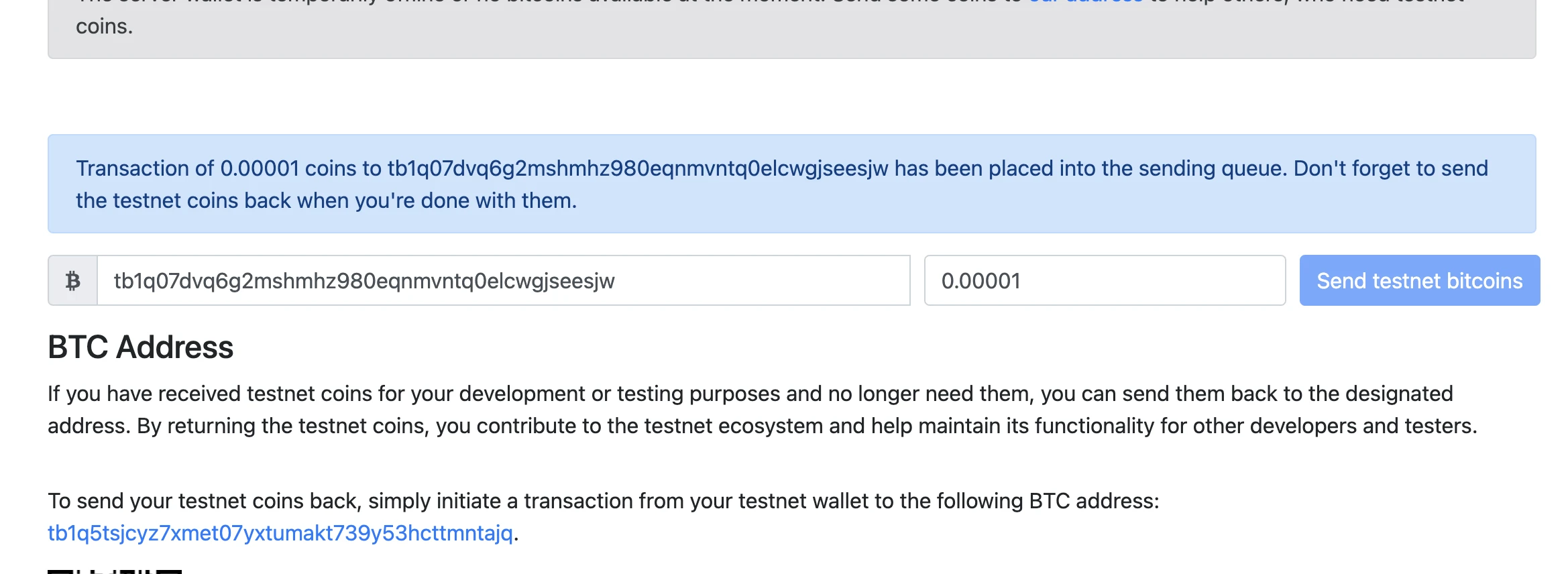
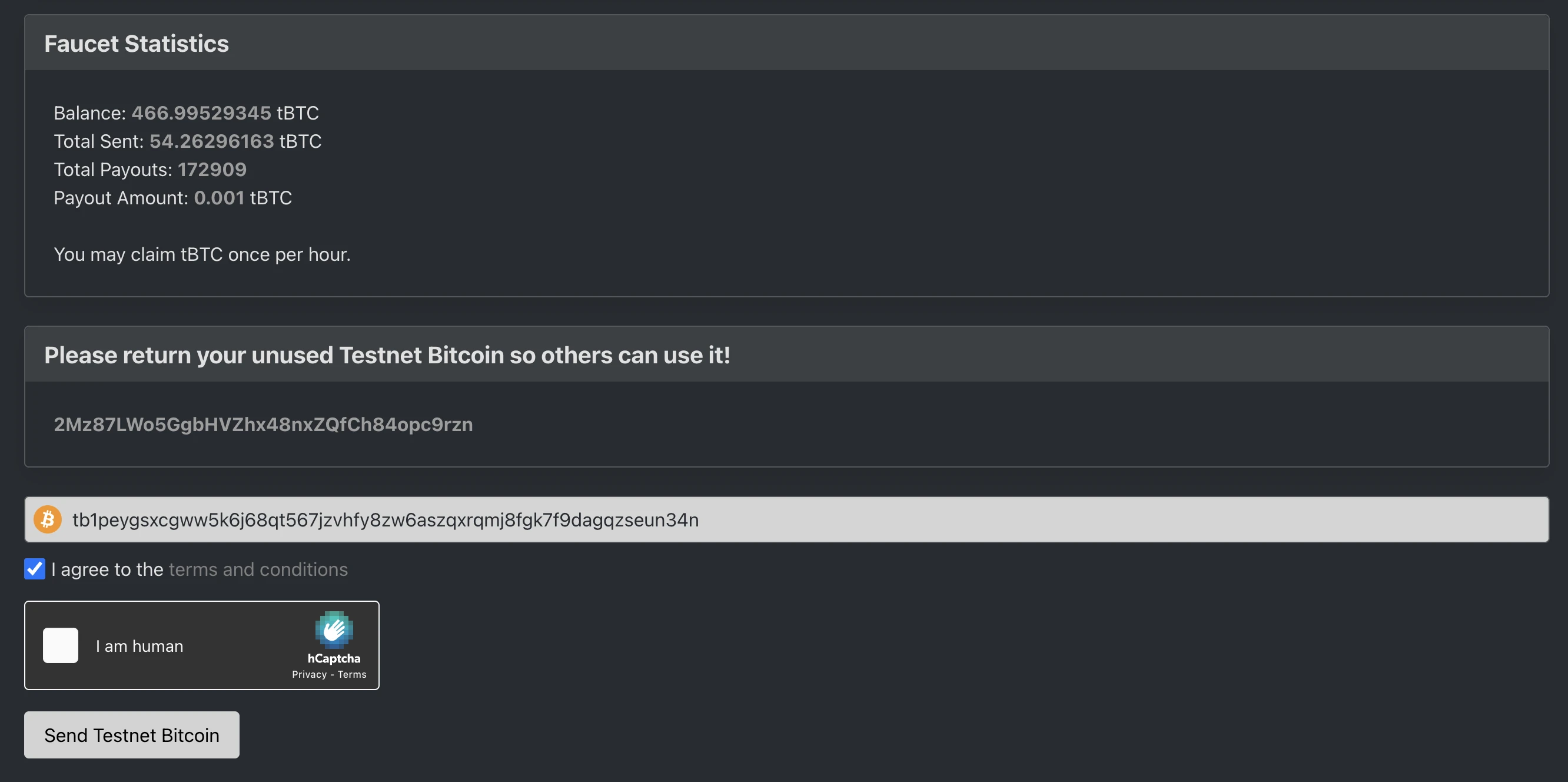
EVM test coin acquisition: Method 1, go to faucet to receive USDC, fill in the EVM address to receive test coins; Method 2, claim on Meson as shown below:

BSquared Network
B²Network, which has received investment from HashKeyCapital, OKXVenture, and Droplet Capital, has officially stated that 10% of the tokens will be used to incentivize early users, with 5% as mining rewards and the other 5% distributed through airdrops.
B²Network is divided into two layers for verification: one layer is the RollupLayer in B²Network, which uses ZK-Rollup to execute user transactions and generate relevant proofs. User transactions and state storage are in the ZK-Rollup layer, and batch proposals and generated zero-knowledge proofs are transmitted to the data availability layer for storage and verification. The other layer is the data availability layer, which includes decentralized storage, B² nodes, and the Bitcoin network. The B² nodes have multiple modules, including incentive mechanisms, verification modules, sorters, and Bitcoin submitter modules.
Decentralized storage is the repository for ZK-Rollup user data and proofs, which enhances security and data reliability through distributed storage. They respectively ensure the accuracy of data storage, the accuracy and efficiency of verifying transactions and state generation, decentralization, and data security. The Bitcoin network is the final settlement layer of B²Network, where users can audit all B² rollup transactions and use proofs on the Bitcoin network to verify their authenticity. The entire process relies on Bitcoin's proof-of-work algorithm to ensure the security of B²Network.
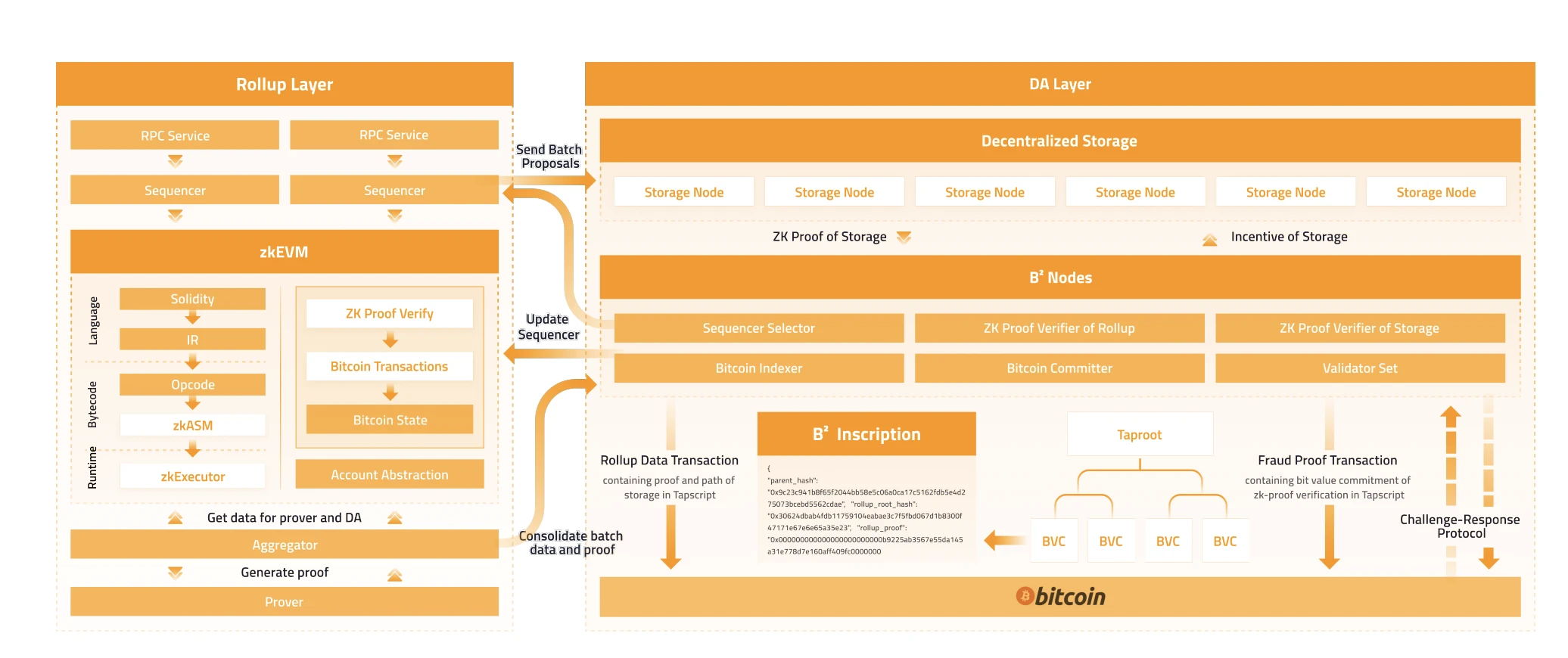
Participation Process
(1) Participate in bsquaredOdyssey
The official has opened a point system, and in the future, it may measure the amount of airdrops with points. Participate in Odyssey to complete corresponding basic tasks, cross-chain interaction, and friend invitations to receive point rewards.
The cross-chain of Odyssey tasks is from the BTC testnet to B²Network, which belongs to the layer1 interaction. Link Unisat and Xverse wallets from the page, and cross-chain the received test coins to B² testnet.
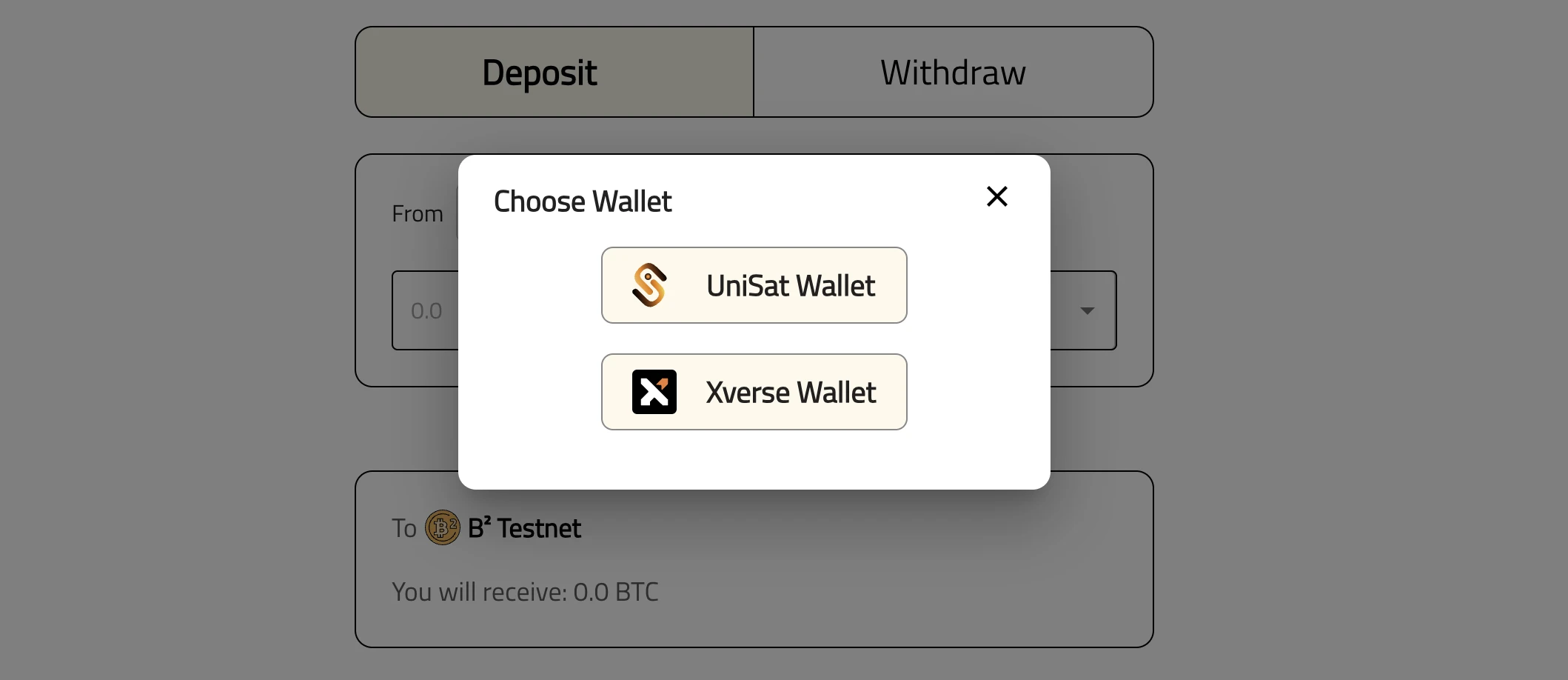
The joint Odyssey activity of BSquared and Meson, go to the Meson official website, connect the EVM wallet, select a testnet, and cross-chain the received test coins to the B² testnet to receive points.
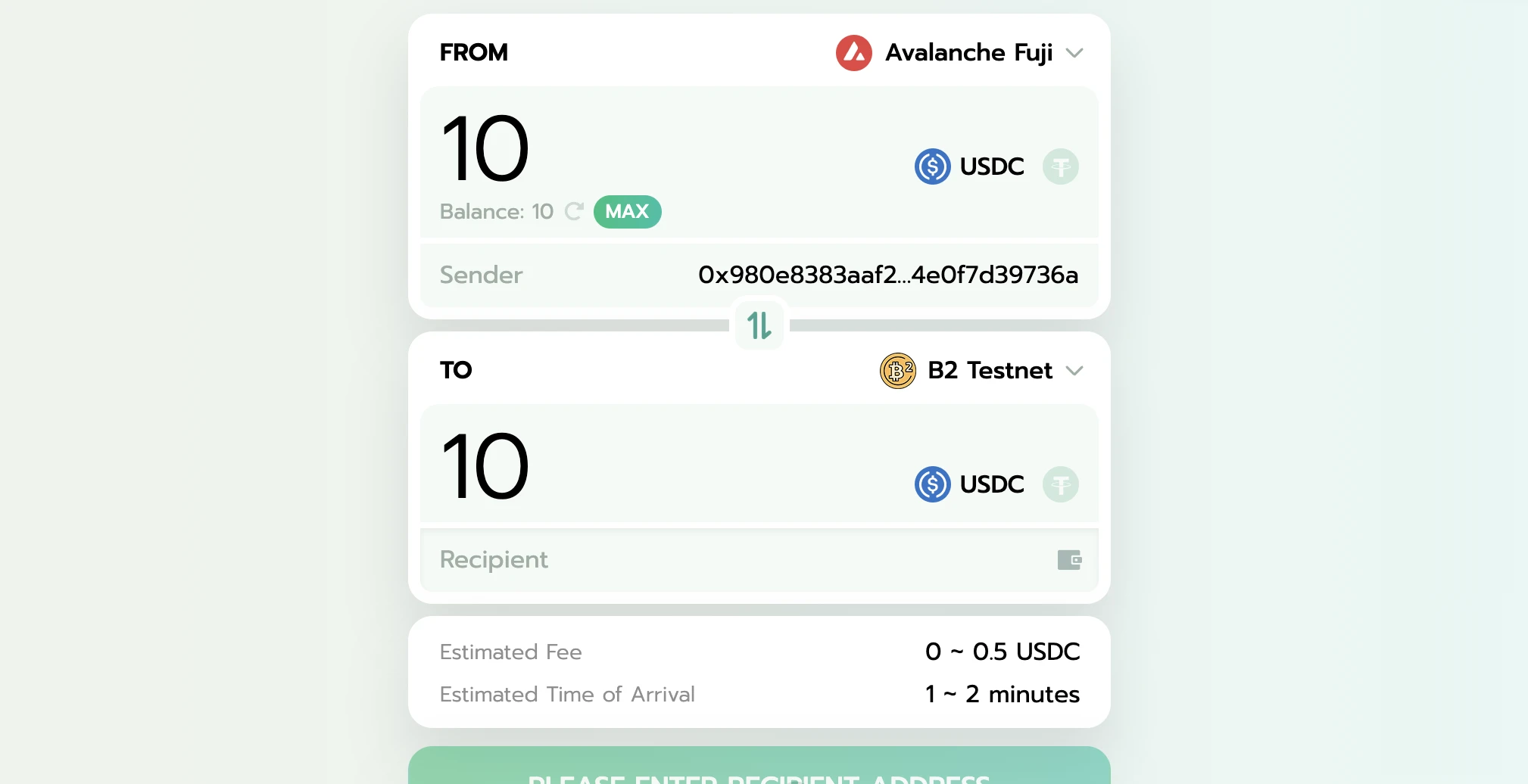
(2) Participate in B²Buzz
B²Network has launched a BuzzCampaign, where users who deposit Bitcoin, ORDIs and SATS in BRC-20, wBTC and USDT on Ethereum, BTCB, FDUSD, and Matic on BNB chain will receive a certain amount of parts, which can be used to assemble mining equipment to mine B² native tokens ("mining" refers to virtual mining machines used to mine B² native tokens as rewards). The pledged assets can be withdrawn in April. The activity simulates BTC native mining, with the reward production halving every month. Production follows a schedule of 2.5% in the first month, 1.25% in the second month, 0.625% in the third month, and so on.
This is essentially a team invitation activity, where players enter a team through an invitation code, and the more assets (using BTC as an example) staked in the team, the better the parts received and the faster the mining speed. By holding core assets in the Bitcoin ecosystem, users can also receive airdrops of components such as ORDI, Atom, Sats, and Rats.
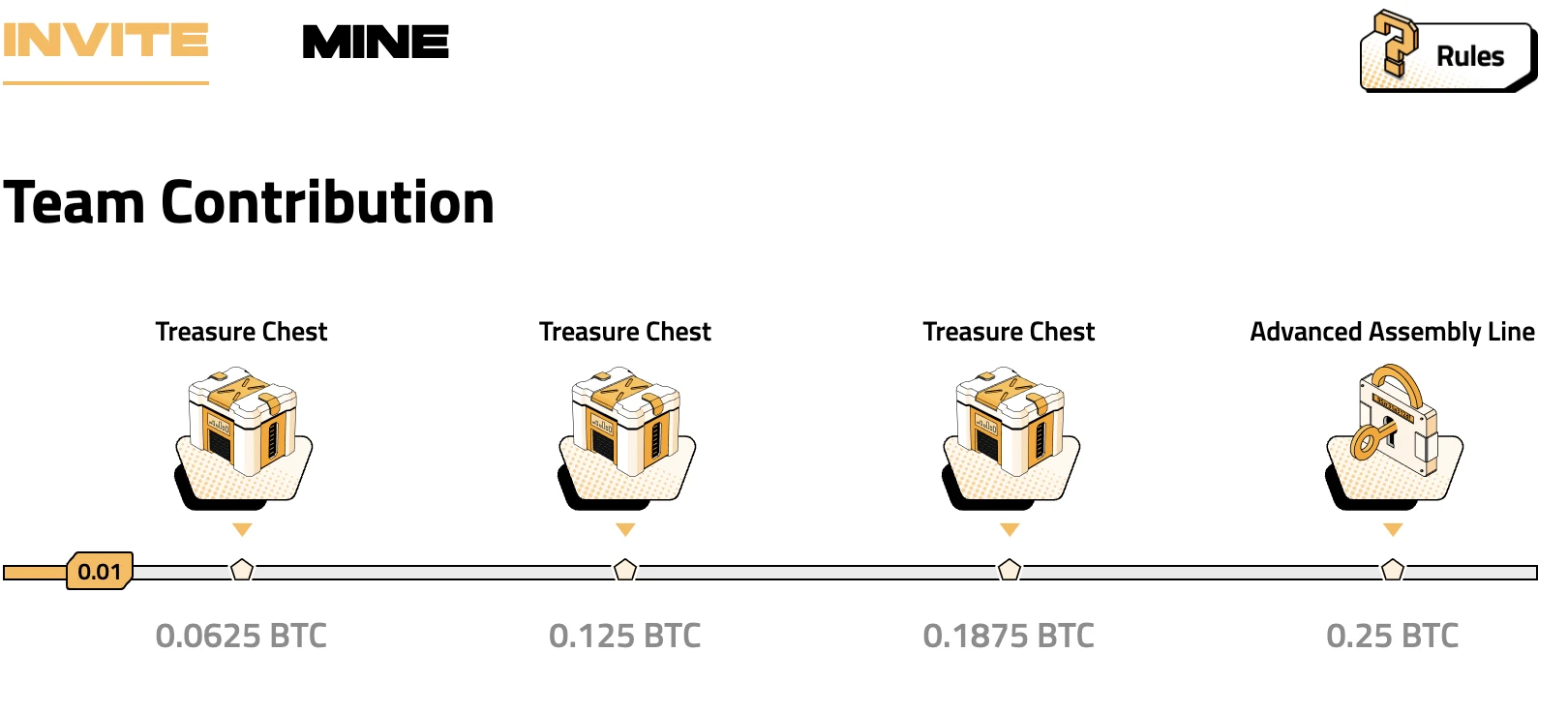
Merlin Chain
Merlin Chain is a Bitcoin Layer2 built by the BRC420 team. Judging from the recent gains of BRC420 and Bitmap, it is clear that Merlin Chain is a good potential opportunity. The official has stated that the largest fair launch of the Layer will be launched, and participation in gas consumption will earn points.
Merlin Chain uses ZK-Rollup to compress a large number of transaction proofs into a simple checksum to improve transaction efficiency and scalability. The sorter nodes on Merlin Chain are responsible for collecting and batch processing transactions, generating compressed transaction data, ZK state roots, and providing proofs through zkEVM. The compressed transaction data and ZK proofs are then uploaded to Taproot on the Bitcoin L1 via a decentralized Oracle network. This Taproot is available for the entire network to ensure transparency and security. Currently, Merlin Chain has connected to 40 EVM chains. Merlin Chain will integrate the first multi-chain inscription DApp, allowing users to mint assets on other layers of Merlin Chain (including Bitcoin L1).
The official has not yet launched any participation tutorials, but the testnet is already online. After receiving test coins, you can interact with the testnet to transfer BTC from the testnet to Merlin. The minimum transfer amount is 0.00001 BTC, and the transfer back requires at least 0.00001 as fees.
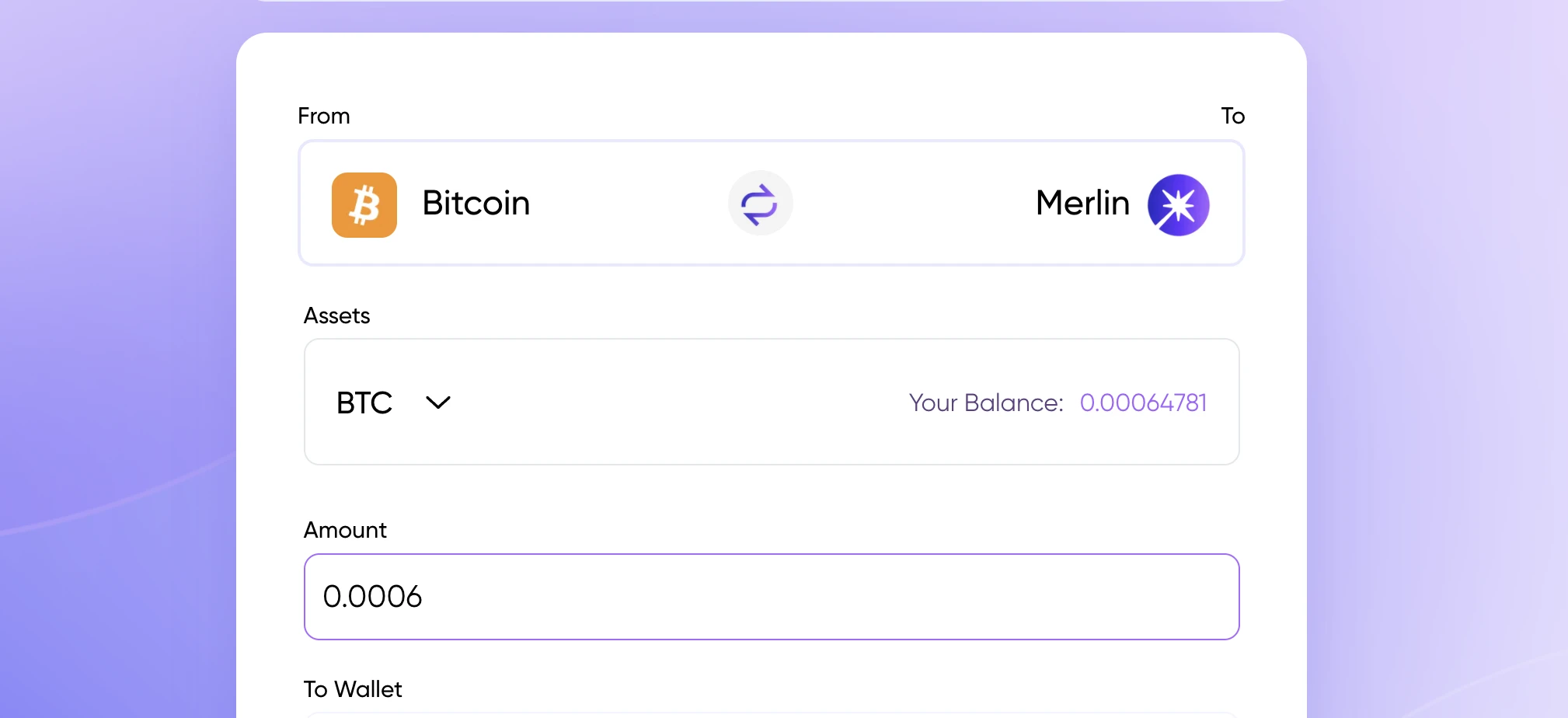
BEVM
Led by Droplet Capital, the project team has openly announced airdrops. BEVM aims to build a decentralized BTC Layer2, using BTC as gas and compatible with EVM, allowing various applications in the EVM ecosystem to be seamlessly and easily deployed on BEVM, thereby increasing the use and consumption scenarios of Bitcoin. In order to better maintain the security of the Bitcoin network, BEVM will launch BEVM-Stack in the future to help high-throughput developers and Bitcoin projects build their own BTC Layer2. Unlike the previous two projects, BEVM uses Taprootmultisim for threshold signatures to improve the fault tolerance of BTC cross-chain transactions.
The official has already launched the Odyssey activity.
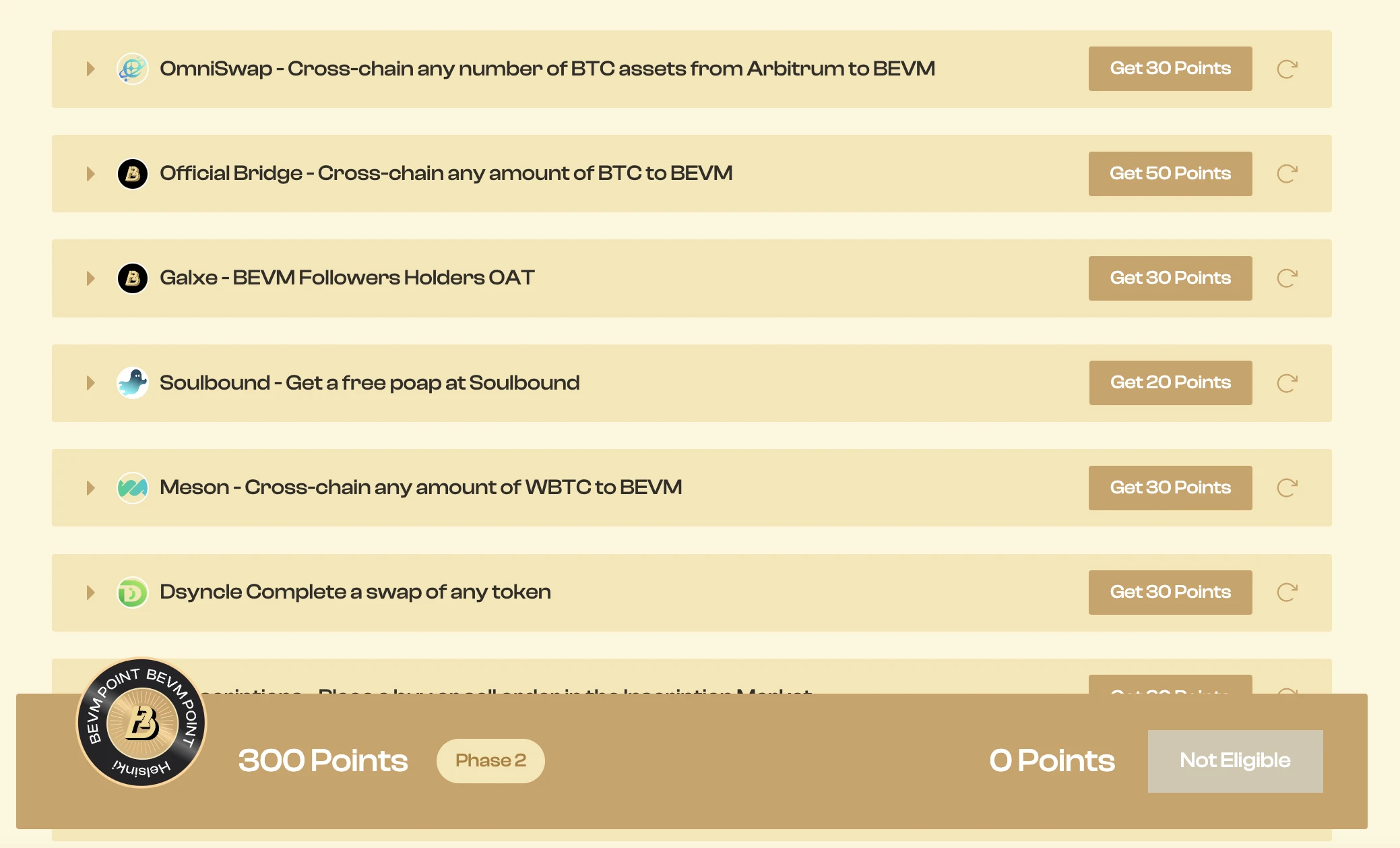
The activity has opened several ways to earn points: 1. Cross BTC to EVM wallet using the official cross-chain bridge; 2. Cross a certain amount of BTC through a third-party cross-chain bridge; 3. Complete basic tasks on the Galaxy platform; 4. NFT platform trading activities.
Unlike the previous two Layer2 networks, the BEVM activity requires us to spend real money, incur a certain amount of gas fees, and may also face cross-chain risks, so participants need to consider carefully.
Conclusion
With the formal approval of Bitcoin spot ETFs and numerous investment institutions announcing their support for the development of the Bitcoin ecosystem, the next bull market may be triggered by the Bitcoin ecosystem. Compared to Layer2 projects in the Ethereum ecosystem, BTC Layer2 is still undervalued. The projects mentioned in this article with expected token launches can be strategically positioned for potential future gains.
免责声明:本文章仅代表作者个人观点,不代表本平台的立场和观点。本文章仅供信息分享,不构成对任何人的任何投资建议。用户与作者之间的任何争议,与本平台无关。如网页中刊载的文章或图片涉及侵权,请提供相关的权利证明和身份证明发送邮件到support@aicoin.com,本平台相关工作人员将会进行核查。




